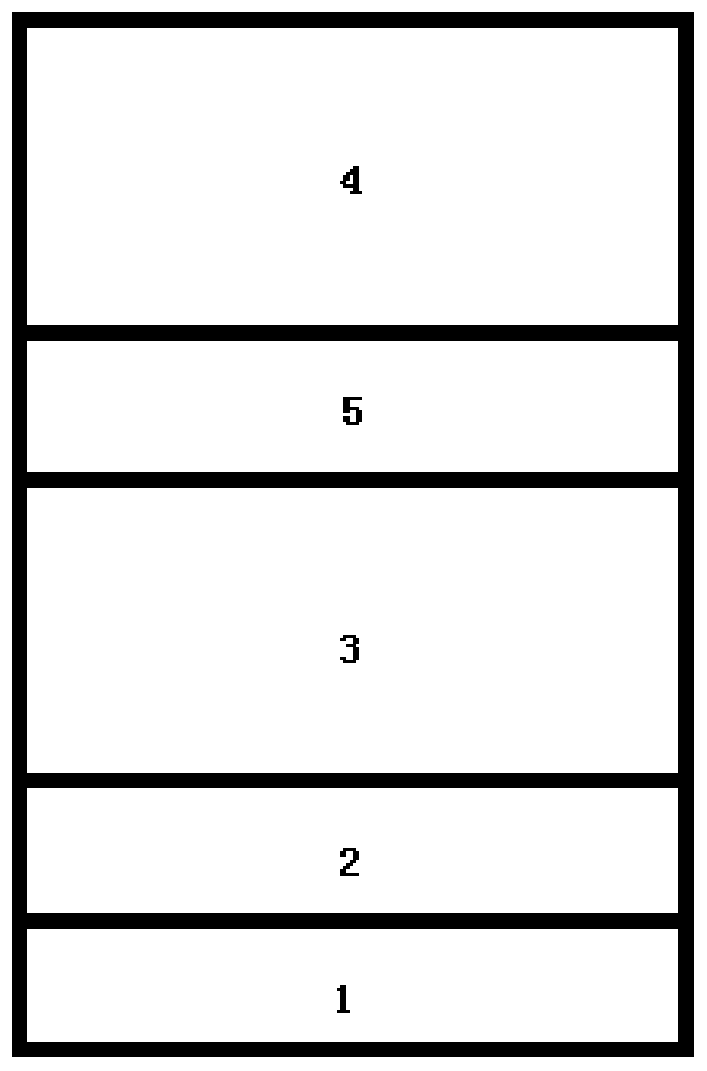Vertical-cavity surface-emitting laser and preparation method thereof
A vertical cavity surface emission, laser technology, applied in the direction of lasers, laser components, semiconductor lasers, etc., can solve the problems of strain accumulation, wafer warping, etc., and achieve the effect of eliminating stress, avoiding wafer warping, and avoiding poor quality
- Summary
- Abstract
- Description
- Claims
- Application Information
AI Technical Summary
Problems solved by technology
Method used
Image
Examples
Embodiment 1
[0039] This embodiment provides a growth method for a vertical cavity surface emitting laser, which has two distributed Bragg reflectors, and grows the second distributed Bragg reflector upward from the substrate, and then grows the first distributed Bragg reflector, and the quantum well active region Between the two distributed Bragg reflectors, the material is AlGaAs space layer and AlGaAs / InGaAs quantum well, the total thickness is one optical cavity length (265nm), take x=0, y=0.95, a=0.7, b=0.95, c=0.65, d=1, N=35, N'=36, the body is as follows:
[0040] (1) Determine the thickness of each layer:
[0041] Using ellipsometer to test the refractive index of the material at 850nm wavelength, Al x Ga 1-x As y P 1-y The refractive index is 3.623, Al a Ga 1-a As b P 1-b The refractive index of 3.166, Al c Ga 1-c The refractive index of As is 3.195, Al d Ga 1-d The refractive index of As is 2.980, using the formula d=λ / 4n, Al can be obtained x Ga 1-x As y P 1-y T...
Embodiment 2
[0047] This embodiment provides a method for growing a vertical cavity surface-emitting laser. There are three distributed Bragg reflectors, and two second distributed Bragg reflectors are grown upward from the substrate, and then the first distributed Bragg reflector is grown. Between the two second distributed Bragg reflectors, the material is AlGaAs space layer and AlGaAs / InGaAs quantum well, the total thickness is one optical cavity length (265nm), take x=0.65, y=0.95, a=1, b=0.95 , c=0.15, d=0.9, N=21, N'=15, N"=5, specifically as follows:
[0048] (1) Determine the thickness of each layer:
[0049] Using ellipsometer to test the refractive index of the material at 850nm wavelength, Al x Ga 1-x As y P 1-y The refractive index of 3.200, Al a Ga 1-a As b P 1-b The refractive index of 2.971, Al c Ga 1-c The refractive index of As is 3.506, Al d Ga 1-d The refractive index of As is 3.040. Using the formula d=λ / 4n, Al is obtained x Ga 1-x As y P 1-y The thickne...
Embodiment 3
[0056] This embodiment provides a method for growing a vertical cavity surface emitting laser. There are two distributed Bragg reflectors. The first distributed Bragg reflector is grown upward from the substrate, and then the second distributed Bragg reflector is grown. Between the two distributed Bragg reflectors, the material is AlGaAs space layer and AlGaAs / InGaAs quantum well, the total thickness is one optical cavity length (265nm), get x=0.1, y=0.97, a=0.7, b=0.96, c= 0.08, d=0.7, N=25, N'=30, details are as follows:
[0057] (1) Determine the thickness of each layer:
[0058] Using ellipsometer to test the refractive index of the material at 850nm wavelength, Al x Ga 1-x As y P 1-y The refractive index of 3.565, Al a Ga 1-a As b P 1-b The refractive index of 3.169, Al c Ga 1-c The refractive index of As is 3.550, Al d Ga 1-d The refractive index of As is 3.164. Using the formula d=λ / 4n, Al x Ga 1-x As y P 1-y The thickness is 59.60nm, Al a Ga 1-a As b...
PUM
 Login to View More
Login to View More Abstract
Description
Claims
Application Information
 Login to View More
Login to View More - R&D Engineer
- R&D Manager
- IP Professional
- Industry Leading Data Capabilities
- Powerful AI technology
- Patent DNA Extraction
Browse by: Latest US Patents, China's latest patents, Technical Efficacy Thesaurus, Application Domain, Technology Topic, Popular Technical Reports.
© 2024 PatSnap. All rights reserved.Legal|Privacy policy|Modern Slavery Act Transparency Statement|Sitemap|About US| Contact US: help@patsnap.com










